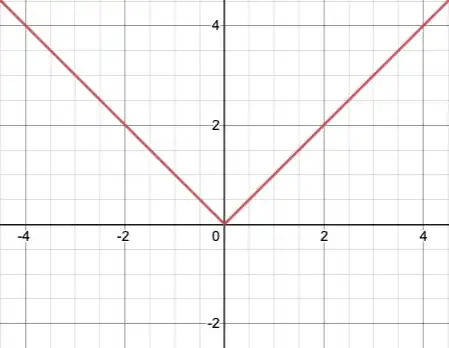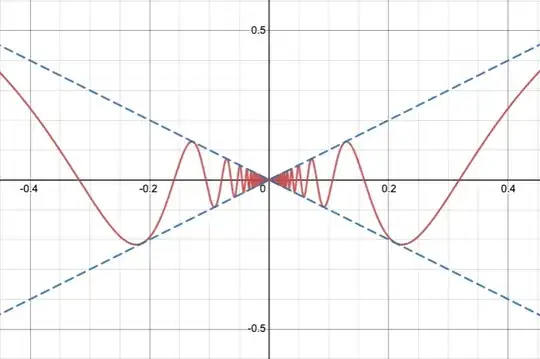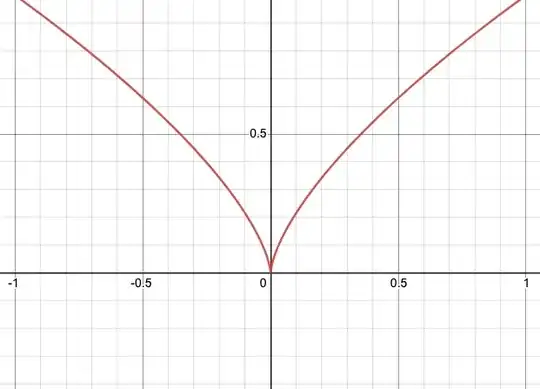I'll state my question up-front, and then provide some motivation afterwards. Is there an example of a function that is
- Defined in a neighbourhood of a point $a$,
- Continuous at $a$,
- But neither the left-hand nor the right-hand derivative exists at $a$,
and that it is 'visually obvious' that the function has these properties (so pathological functions like the Weierstrass function are excluded). For the purposes of this question, I will define 'visually obvious' as meaning that it is possible to guess that the function has the above properties just by looking at its graph.
The function $f(x)=|x|$ is probably the simplest example of how a function can be continuous, and yet not differentiable, at a point:
It is clear just by looking at the graph that $f$ is continuous at $0$, but $f'(0)$ does not exist as $f'_+(0)=1$ and $f'_-(0)=-1$. However, what I find unsatisfying about this example is that $f$ is still fairly well-behaved around $0$—it is meaningful to ask about the 'rate of change' of the function, it's just that we get different answers when we zone in from the left-hand side compared to the right-hand side. I'm looking for a function where it is not meaningful to talk about the 'rate of change' at all, and yet the function is still continuous at the point in the question.


